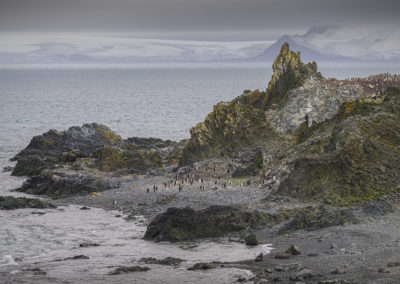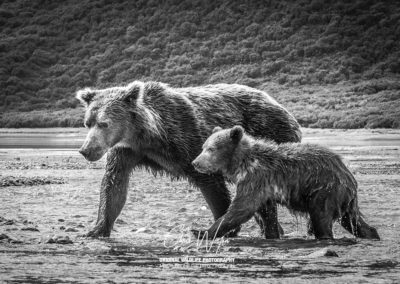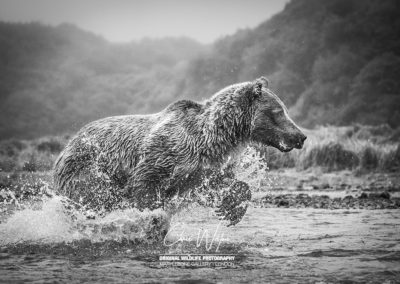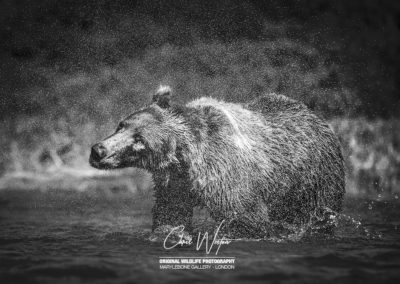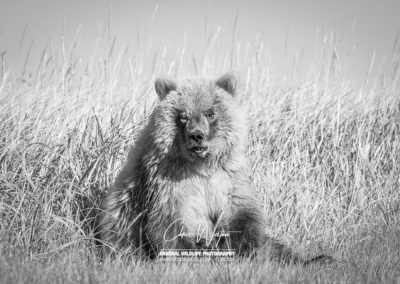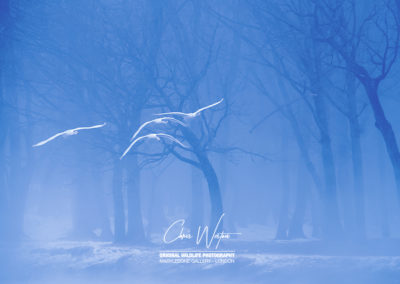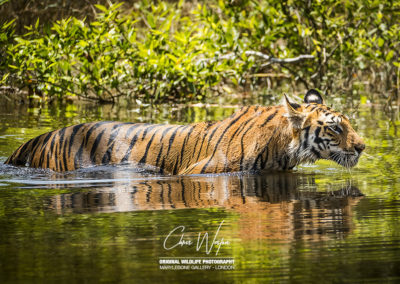Portfolios
Whatever the make of camera, whatever the system or format, in the end it all comes down to the reason we pick up a camera at all – the final image. One of my photographic heros, Freeman Patterson, once said, “The camera points both ways. In expressing the subject, you also express yourself.” These portfolios are just a selection of my favourite images. They speak to me and of me. They are a reflection of a moment in my life, each one a reminder and a memory.
The Ice Continent
I guess every nature photographer at some point in their life dreams of pointing their lens towards the wildlife and landscape of Antarctica. Frank Hurley, the Australian-born photographer who accompanied Ernest Shakleton on his doomed 1914 Imperial Trans-Antarctic Expedition, was so enamoured by the landscape he felt “he could live there for the rest of his life.”
Equipment
Camera:
Nikon Z6
Fujifilm GFX 100
Lenses:
Sigma 18-35mm f/1.8 ART
Nikkor 70-200mm f/2.8
Fujifilm GF 23mm f/4
Fujifilm GF 32-64mm f/4
Fujifilm GF 100-200mm f/5.6
Photographer’s statement
The creative power of intent
I am lucky enough to have been to Antarctica twice. The first time was overwhelming – the enormity, the beauty, the isolation. So much so I felt my images didn’t rerally do justice to my experience. The second time, I was more focused. Partly, I guess, because I knew more what to expect. Less surprised, I was able to consider more mindfully what Antarctica means to me.
What strikes me most about the ice continent is the sheer scale of the landscape. Icebergs as tall as multi-story buildings dwarf all animate lifeforms, humbling you without making you feel inferior. With a limited schedule, I wanted to get the most – photographically – of the time I had and so I set myself a challenge.
Because the scale of Antarctica is what struck me most, I chose to use scale as my theme. I set out to capture a portfolio of images that revealed pictorially what it means to live in this vast, daunting wilderness.
The last best place on Earth
Of all the places I’ve photographed, the place I’ve photographed the most and the place I most look forward to going back to is Katmai National Park in Alaska. Every summer, the normally solitary brown bears drop their territorial guard and gather in the bays and inlets of the Katmai peninsula, ready for the annual salmon run.
Equipment
Camera:
Fujifilm X-T2
Lenses:
XF 100-400mm f/4.5-5.6
XF 50-140mm f/2.8
XF 16-55mm f/2.8
Photographer’s statement
The visual power of monochrome
Our senses of hearing, taste, touch and smell are dulled by our primary sense – vision. Close your eyes and you will start to hear sounds you were previously unaware of because vision is no longer taking over.
The equivalent in photography are the five elements of design – line, shape, colour, pattern and texture. Of these, the overpowering element is colour. Remove colour and the other elements are given room to breathe.
Photographing the bears of Katmai, I wanted to emphaise texture – in the environment and the bears’ grizzly coats. Shooting in monochrome enables me to express this intent more clearly in the final print.
The way of the Samurai
There’s something very special about Japan. It’s hard to put your finger on what it is exactly but I think it’s to do with Bushido – the Samurai code of conduct. To many it is the soul of Japan. It’s about values – honour, politeness, respect, benevolence and sincerity – characteristics that exude in the people and in nature. Wildlife is abundant, especially on the northern-most Island of Hokkaido. From the unique hot-tubbing macaques in Jigokudani to the graceful Whooper swans on Lake Kussharo, to the dancing cranes in Kushiro and the critically endangered Steller’s sea eagles. Even in deepest mid-winter, there is always plenty to photograph.
Equipment
Camera:
Fujifilm X-T2
Lenses:
XF 100-400mm f/4.5-5.6
XF 50-140mm f/2.8
XF 16-55mm f/2.8
Photographer’s statement
Find the essence and you’ll discover the story
Photography is looking beneath the surface to discover the story within. This is what I mean when I talk about essence.
The courtship rituals of red-crowned cranes is a lovers’ dance – sensual and erotic. The beauty of a whooper swan is more than feather deep. It’s found in the values of grace and serenity. And the real story of the hot-tubbing macaques is not the quirkiness of the situation but the plight of survival in extremis, seen so prominently in their soulful eyes.
Sensuality, gracefulness, serenity, sorrow … these are our subjects, our stories. They are what turn a snapshot into art.
In Kipling’s jungle
Rudyard Kipling described India as “the finest story in the world” and, for a wildlife photographer, nowhere is this more true than in the country’s moist deciduous sal forests, where one of the noblest creatures on Earth roams ghostlike. The tiger. Photographing tigers is always a challenge. Planning and preparation are key. For my most recent tiger project I headed to Bandhavgarh National Tiger Reserve, in Madhya Pradesh, in late April. The season was turning, the temperature rising, the monsoon was coming. An in the heat of the day, tigers head to the water – the only place left to cool off.
Equipment
Camera:
Fujifilm X-H1
Lenses:
XF 100-400mm f/4.5-5.6
XF 50-140mm f/2.8
XF 16-55mm f/2.8
XF 200mm f/2
Photographer’s statement
What’s in a lens?
I have access to a range of lenses, from 8mm super-wide to 400mm super long and whatever the assignment I always pack them all.
Lens choice is a key factor in visual storytelling. It’s important the narrative dicatates the lens you use, not the other way around. Wide lenses, for example, put an animal in its environment. Telephoto lenses isolate the subject from the environment, emphasising facial features. My favourite focal length – 50mm – reveals the world as we see it, without distortion, which helps put the viewer in the moment, which is where I want them.
Photography is about making choices and one of the most fundamental decisions you have to make is, what’s the story you want to tell?










